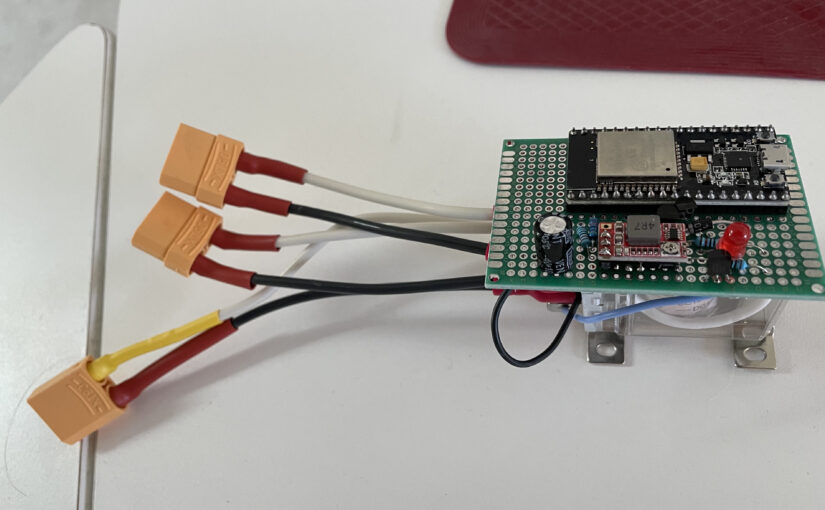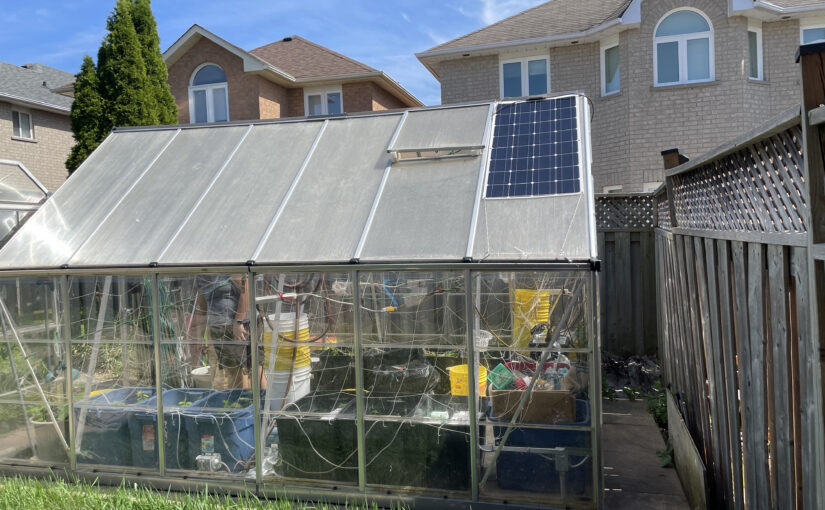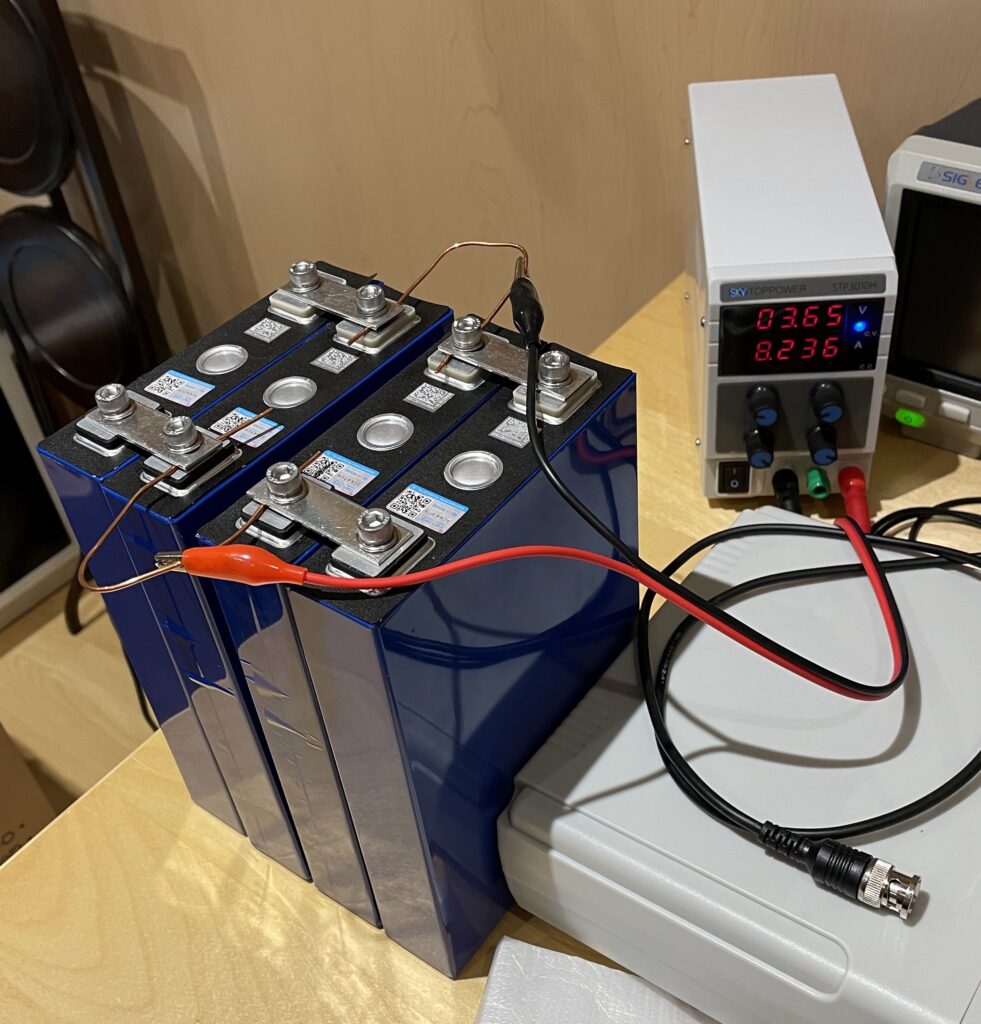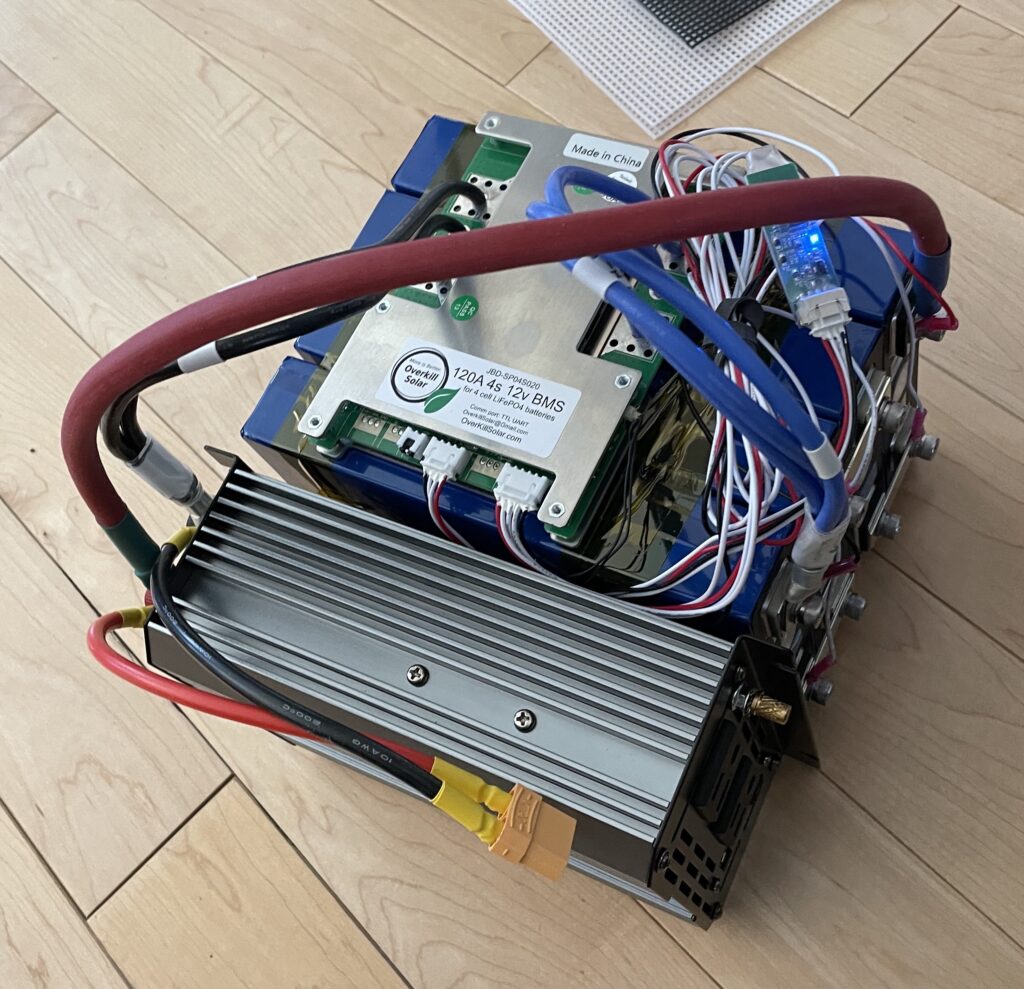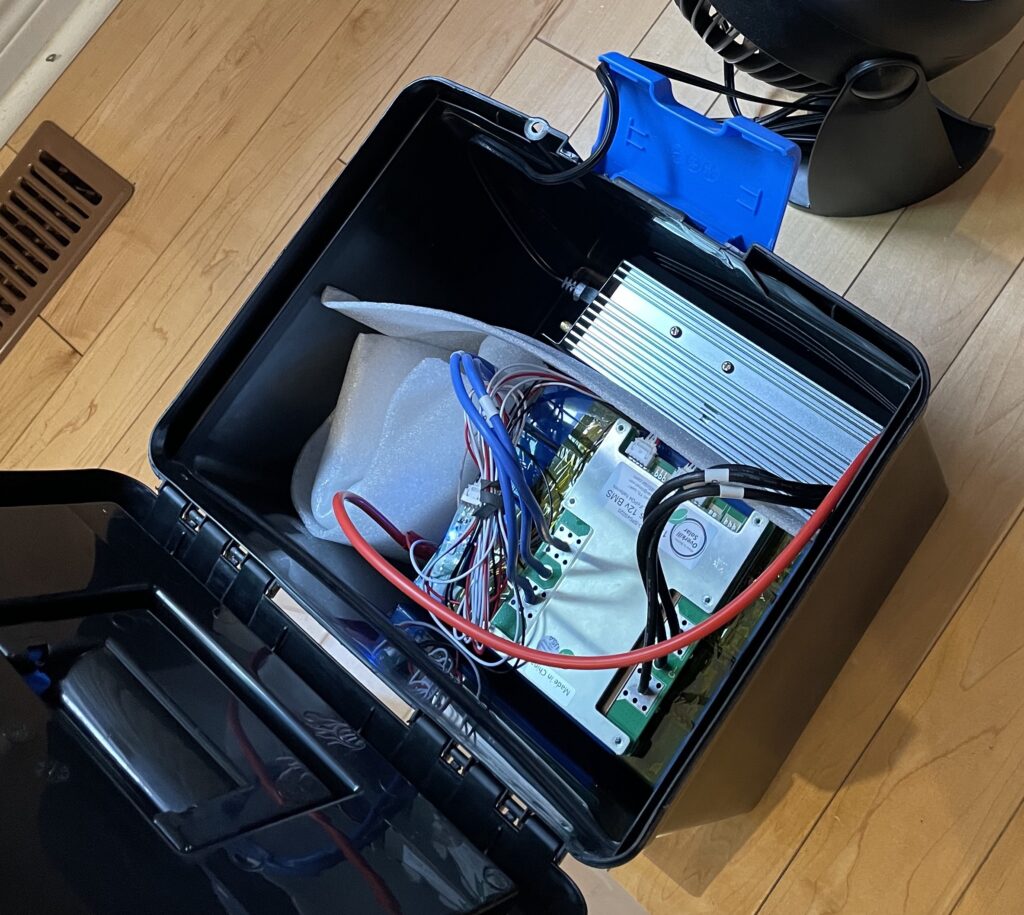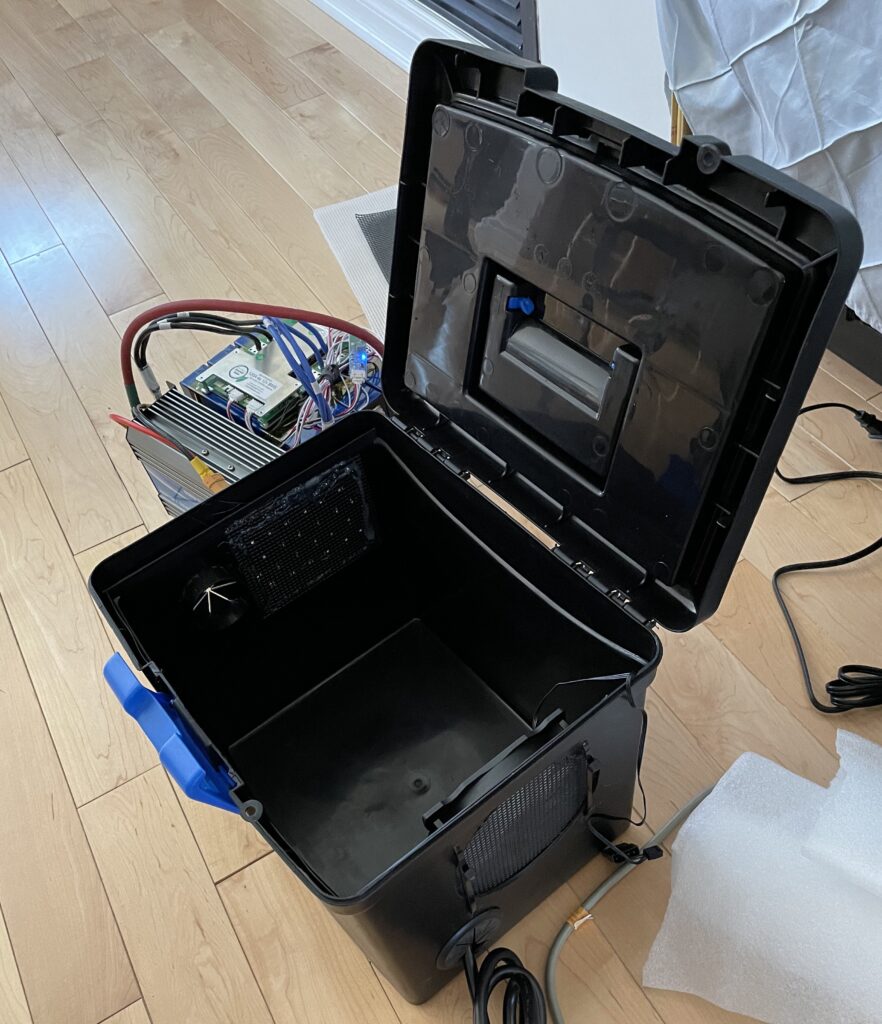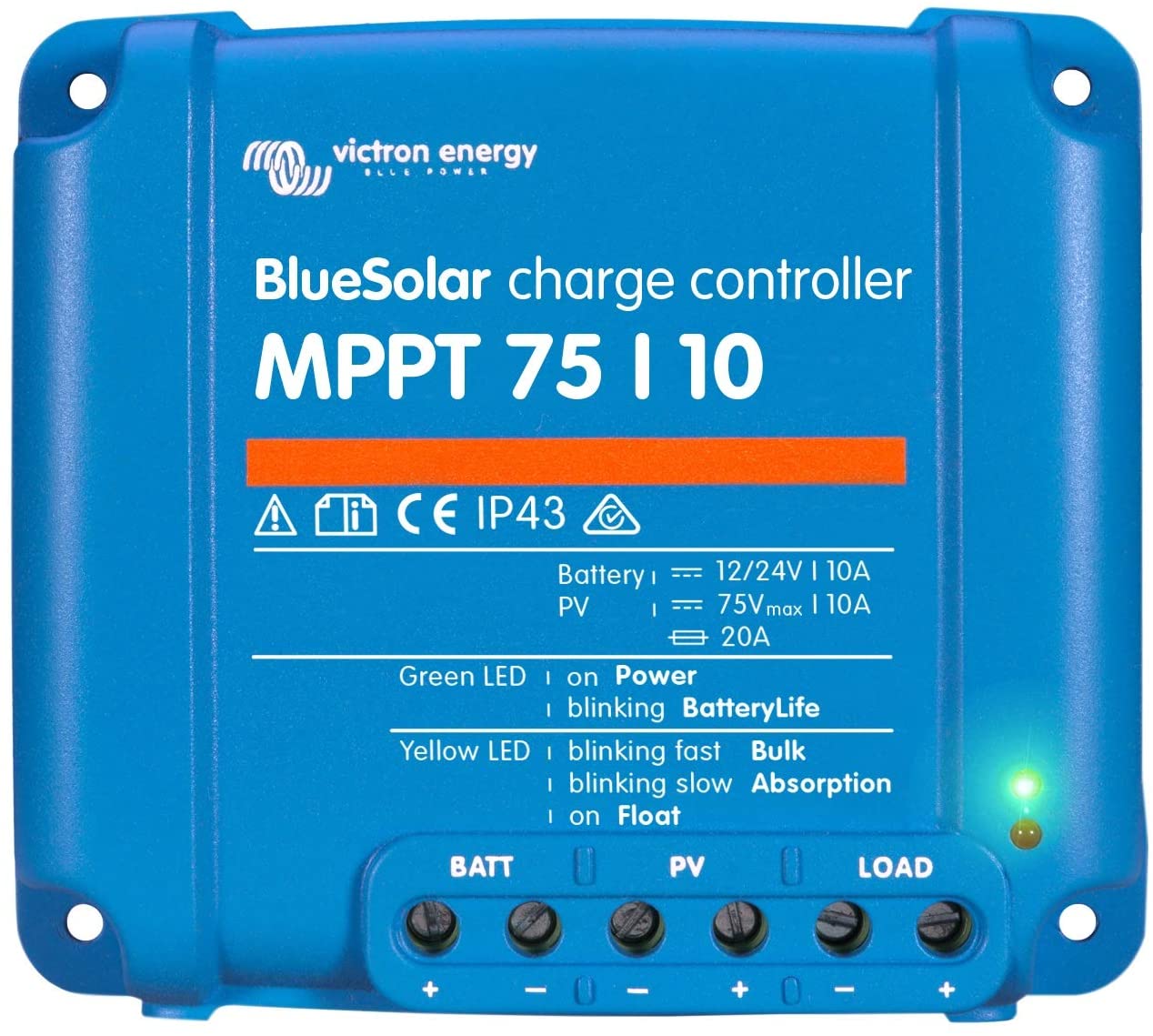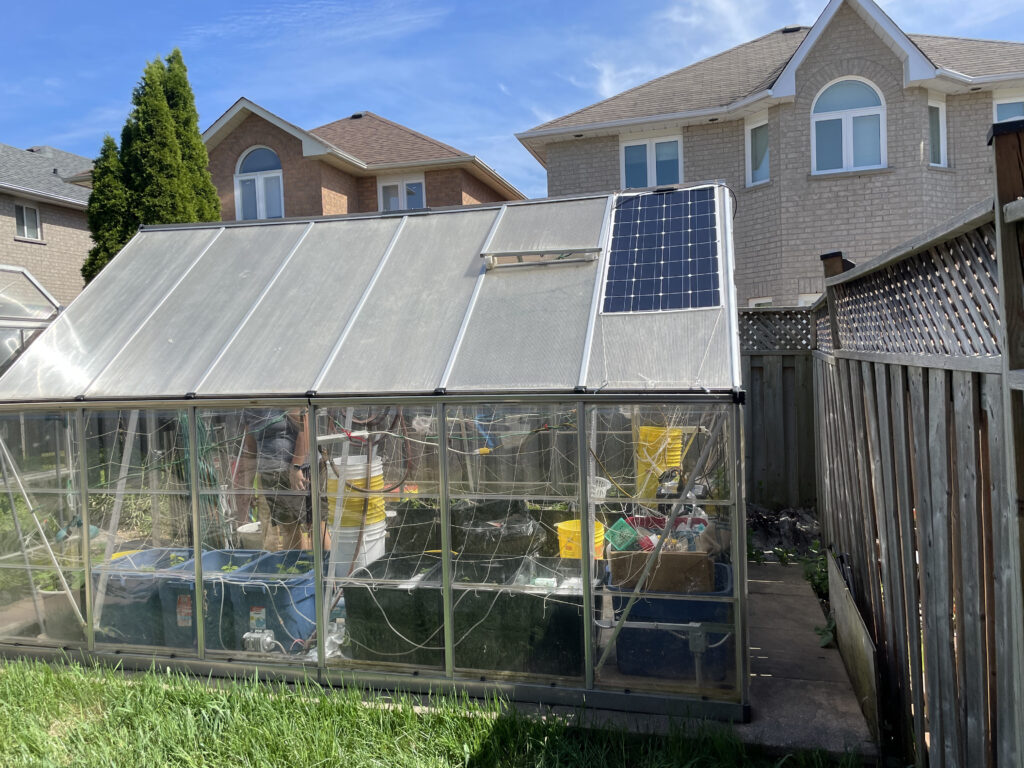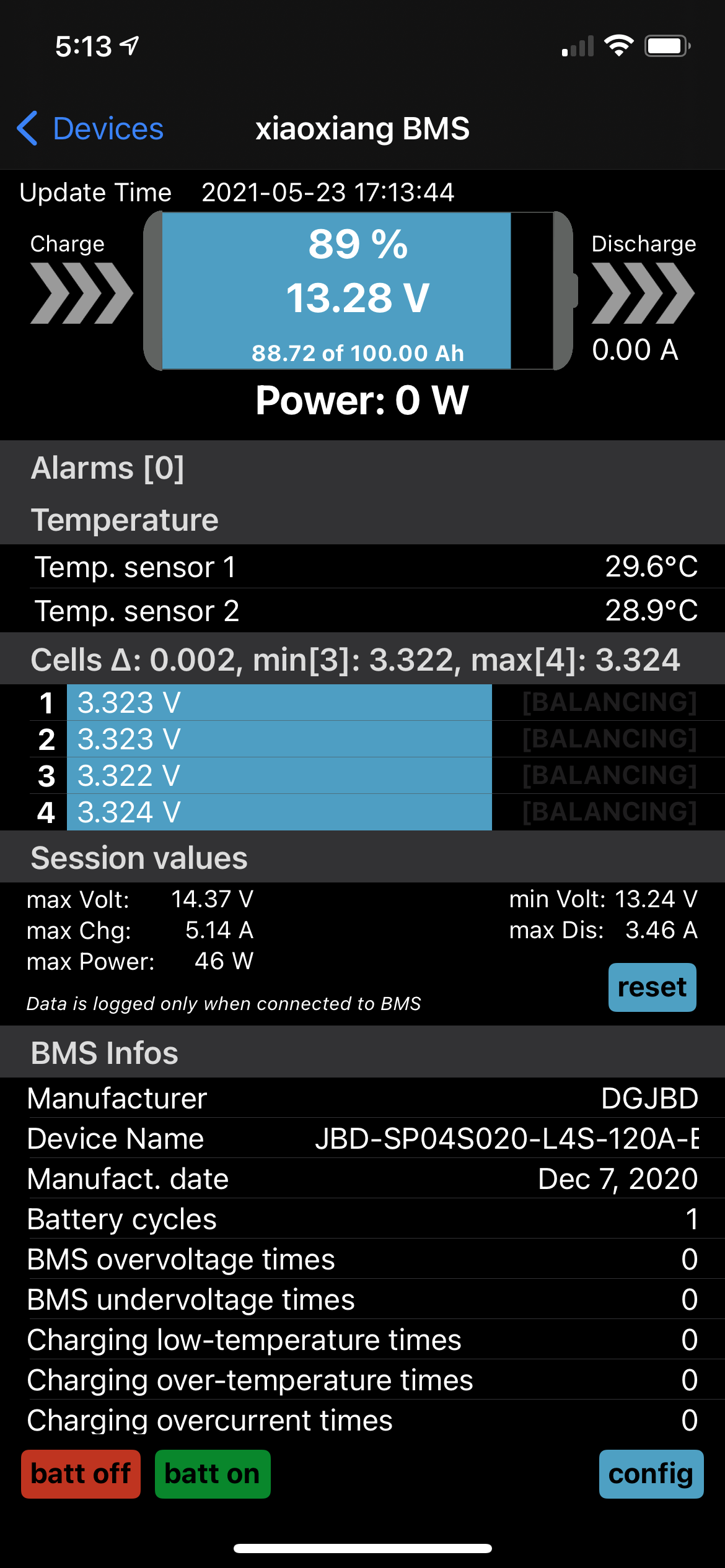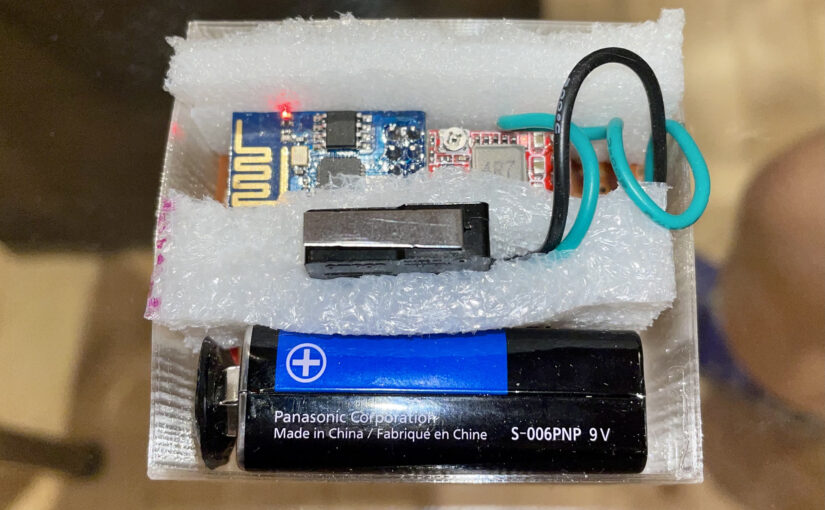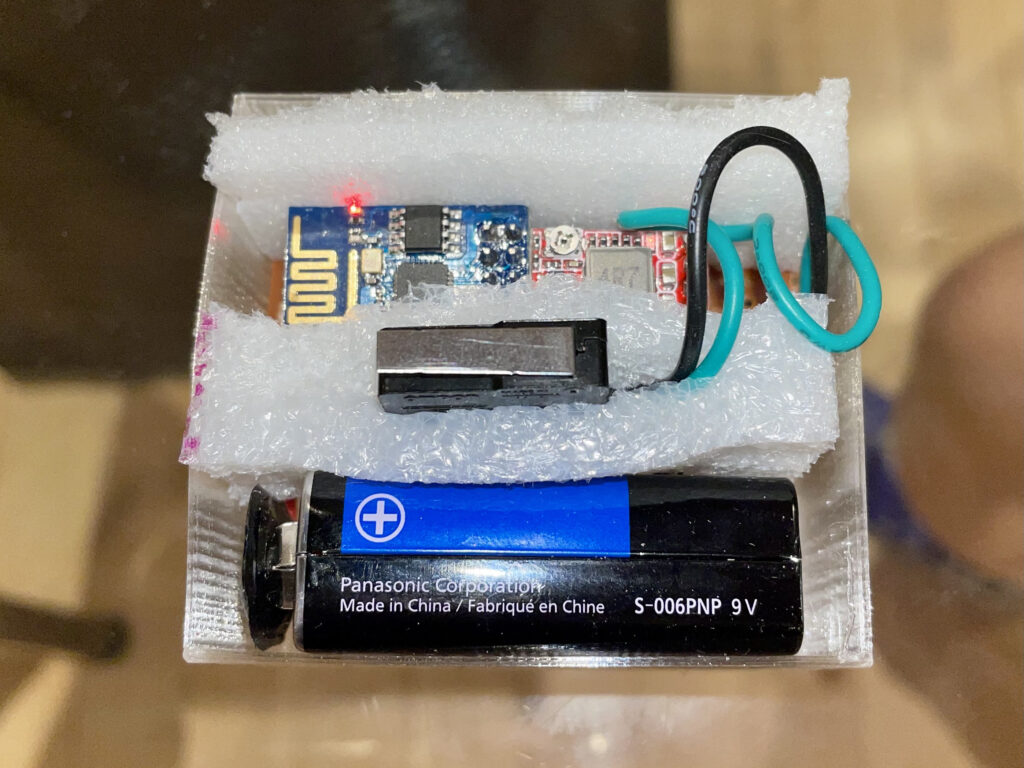This is an update to my Sunroom Project that I detailed in a previous post.
After the installation of the solar panels, there was a question of whether the solar panels had enough juice to keep the batteries charge for cloudy days or night time operations. After a few days of operation, the observation is a definitive “no”.
The overall load of water pumps, fans, and temperature sensors amounted to be about 80W. The two solar panels (100W each, equaling 200W) during sunny days will only yield enough to cover this load. The less than optimal positioning on the sunroom’s roof will deprive the solar panels in operating in their optimal efficiency. Even on a really sunny day the panels may have a little surplus to give back to the battery, but nothing close to offer a continuous charge to the battery. Most of the time, the solar power is just enough to power the load and leave the battery as is. Left unattended, the batteries will slowly drain to nothing, as it is being discharged during cloudy days and at night times.
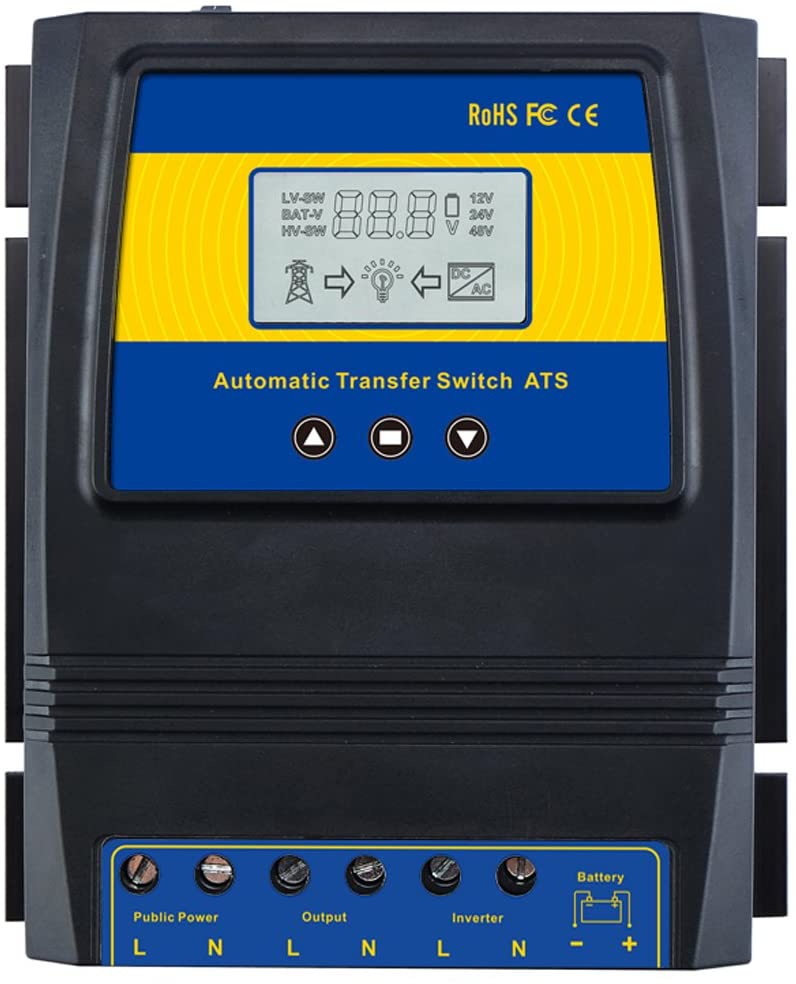
So much for going entirely off grid! Since it is a sunroom, the roof based real estate is a bit precious, and two panels is as much as we wanted to take away from the sunshine that feed the plants. Not all bad news, we still have the opportunity to time shift our power needs from the grid, from peak time to non-peak time.
For the past few days, I had to go out to the sunroom during the evenings and switch the battery from solar power and back to the grid via the 480W DC Power Supply, so that it will charge itself back during the night. This is of course super inconvenient. What I needed is an Automatic Transfer Switch (ATS). Something like the one shown on the left offered by Amazon.
The price was pretty exorbitant, over $150.00, much more than what I wanted to spend. When there is a need, there is an opportunity to invent. I thought this is such a good opportunity to create my own ATS.
My ATS will be a simple 12V relay powered by the battery itself, and controlled by a WiFi capable microcontroller like the ESP32S that is perfect for the job. With a bit of searching on Amazon, I found this gem, a simple 12V relay that is only around $16.
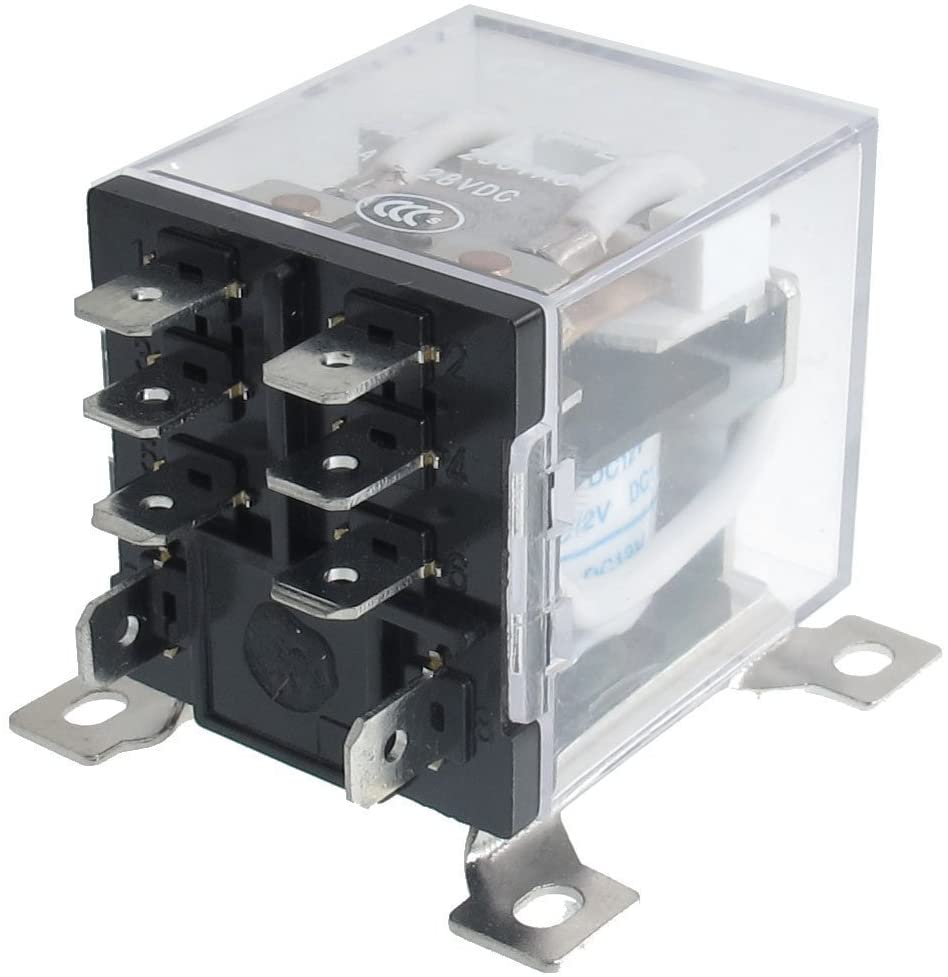
At most, the relay only needed to handle 10A, so the 30A rating is a total overkill, but good enough for my purpose.
I already have an ESP32S that I purchased earlier from AliExpress or Ebay. This is a WiFi enabled micro controller that can be programmed with the popular Arduino IDE. They were less than $5 a piece when I got them, and was literally sitting on my shelf awaiting for a project such as this. The master plan is as follows:
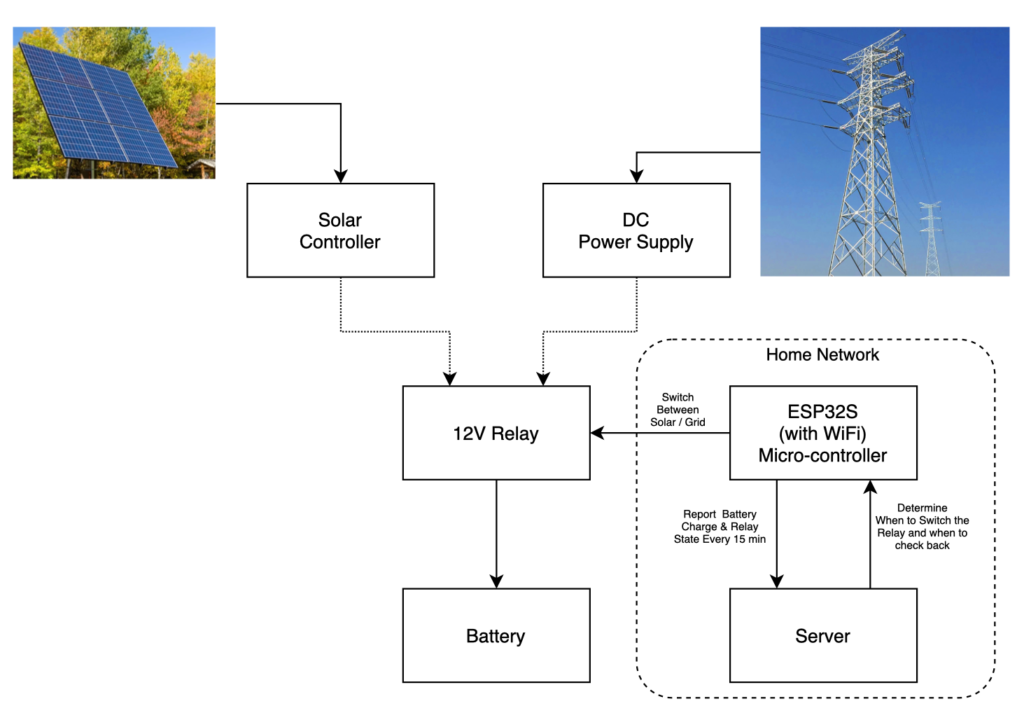
The EPS32S will remotely control the relay, which physically makes contact between the battery with either of the solar controller or the power supply. The when is determined by a remote server on the same home network. The ESP32S will periodically post the battery voltage status and the current state of the relay to the server.
Using this approach, I can place the majority of the smarts on the server instead of the micro controller. I can also change the logic without having to reprogram the ESP32S.
The ESP32S comes with many GPIO pins. We will make use of three of the GPIO pins, one to detect battery voltage via a voltage divider. The other two will send a pulse to a simple latch that will drive the switch position of the relay. The latch will use a popular NE555 chip in bistable mode. Here is a simple schematic that I put together.
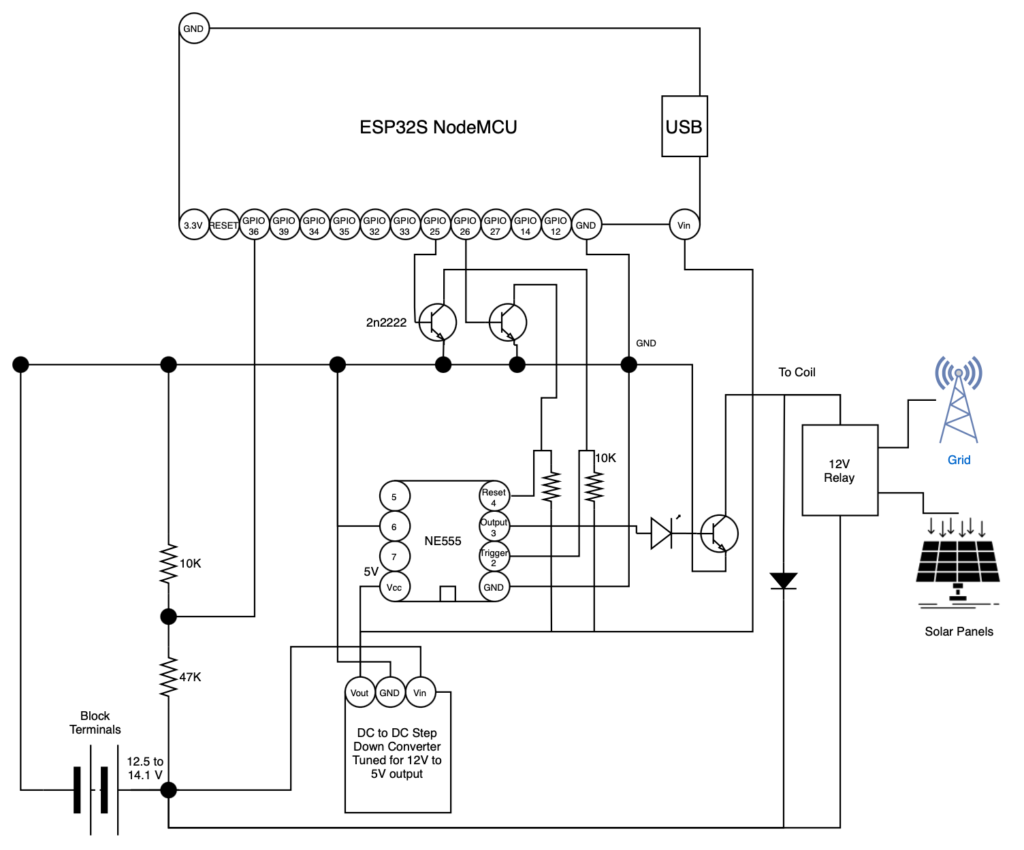
I prototyped the above circuit on a breadboard and using a desktop power supply to simulate the battery.
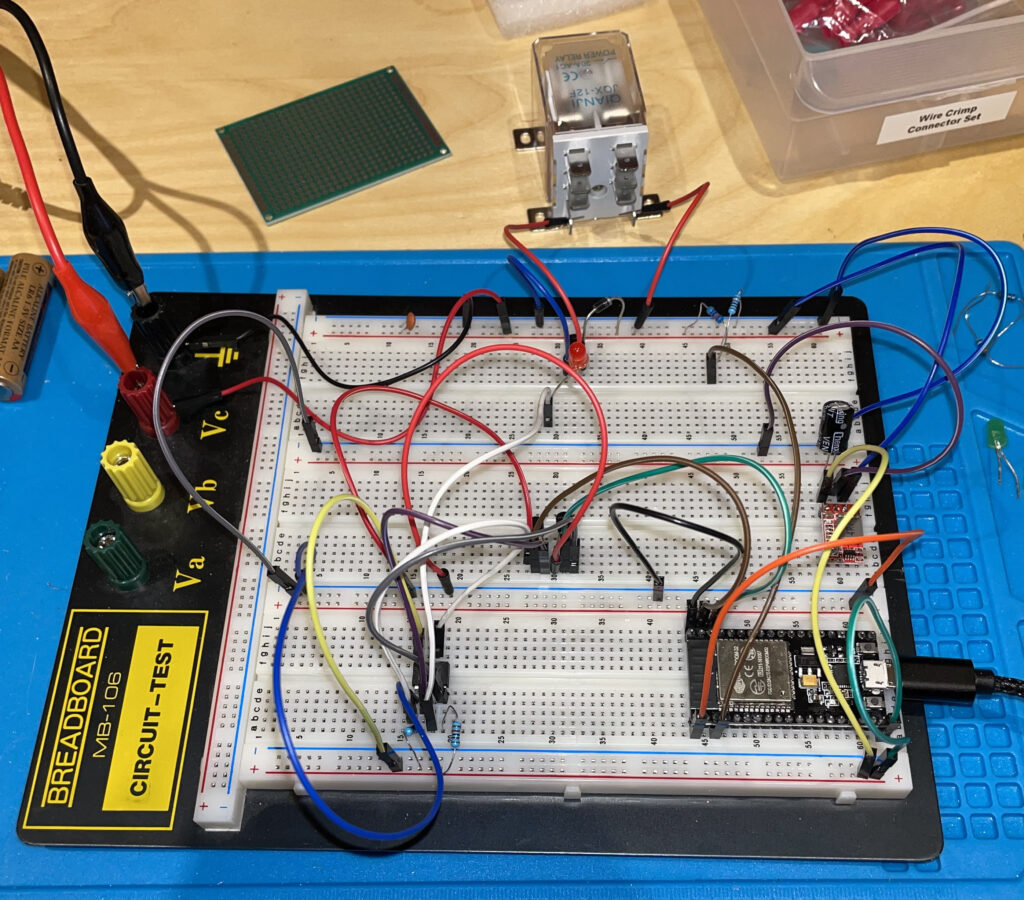
Everything worked as expected, and I proceeded to solder everything up on a PCB.
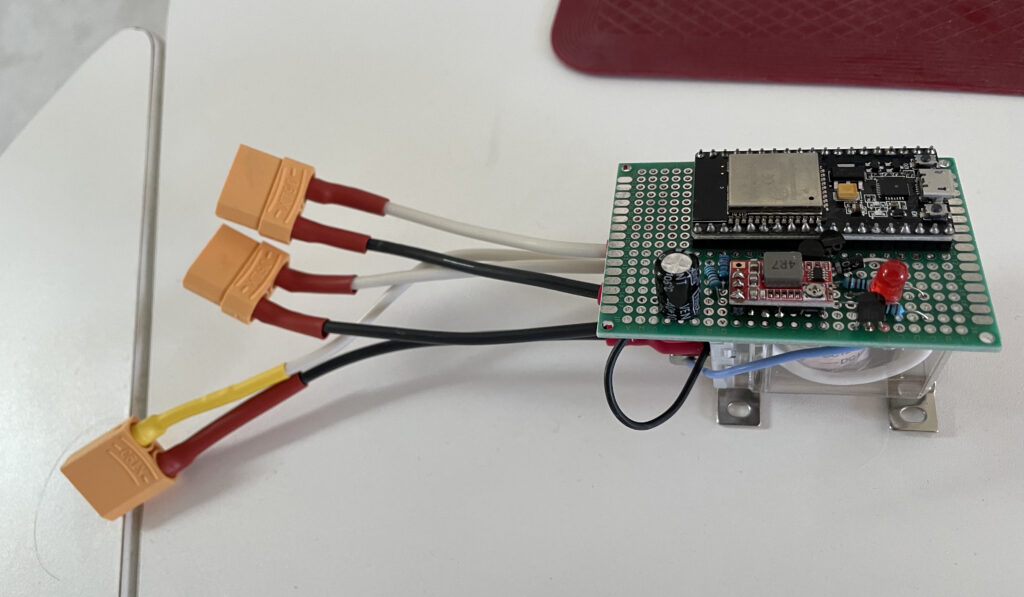
Below is the Arduino sketch that I wrote for the ESP32S to report the battery voltage and the relay switch state to my server.
#include <WiFi.h>
#include <HTTPClient.h>
/* Server and WiFi configurations are fake */
#define SERVER_IP "192.168.1.5"
#ifndef STASSID
#define STASSID "##############-iot"
#define STAPSK "##################"
#endif
#define uS_TO_S_FACTOR 1000000
#define BATT_VOLTAGE_GPIO 36
#define GRID_PULSE_GPIO 25
#define SOLAR_PULSE_GPIO 26
float volt = -1.0;
RTC_DATA_ATTR int currentState = -1;
void setup() {
pinMode(BATT_VOLTAGE_GPIO, INPUT);
pinMode(GRID_PULSE_GPIO, OUTPUT);
pinMode(SOLAR_PULSE_GPIO, OUTPUT);
digitalWrite(GRID_PULSE_GPIO, LOW);
digitalWrite(SOLAR_PULSE_GPIO, LOW);
Serial.begin(115200);
Serial.printf("Connecting to %s..\n", STASSID);
WiFi.begin(STASSID, STAPSK);
while (WiFi.status() != WL_CONNECTED) {
delay(250);
Serial.print(".");
}
Serial.print("\nConnected with IP: ");
Serial.println(WiFi.localIP());
}
void pulse(int pin) {
digitalWrite(pin, HIGH);
delay(200);
digitalWrite(pin, LOW);
}
// the loop function runs over and over again forever
void loop() {
WiFiClient client;
HTTPClient http;
digitalWrite(LED_BUILTIN, HIGH);
float v = 0;
for (int i = 0; i < 200; i++) {
v += analogRead(BATT_VOLTAGE_GPIO);
delay(2);
}
volt = v / 200.0;
Serial.print("Voltage Read: ");
Serial.println(volt);
http.begin(client, "http://" SERVER_IP "/autoTransferSwitch.php"); //HTTP
http.addHeader("Content-Type", "application/x-www-form-urlencoded");
// start connection and send HTTP header and body
String postStr = "id=sunroom";
postStr += "&volt=" + String(volt);
postStr += "&state=" + String(currentState);
int httpResponseCode = http.POST(postStr);
digitalWrite(LED_BUILTIN, LOW);
Serial.printf("Response code: %d\nResult: ", httpResponseCode);
String instructions = http.getString();
Serial.println(instructions);
String result = "nothing";
long sleepTime = 5L;
char buffer[100];
strncpy(buffer, instructions.c_str(), 100);
const char d[2] = ",";
int field = 0;
char* token = strtok(buffer, d);
while ( token != NULL ) {
if (field == 0) {
result = String(token);
}
if (field == 1) {
sleepTime = atol(token);
}
token = strtok(NULL, d);
field++;
}
if (result.equals("solar")) {
pulse(SOLAR_PULSE_GPIO);
currentState = 1;
} else if (result.equals("grid")) {
pulse(GRID_PULSE_GPIO);
currentState = 0;
} else {
digitalWrite(GRID_PULSE_GPIO, LOW);
digitalWrite(SOLAR_PULSE_GPIO, LOW);
}
http.end();
Serial.print("Sleeping for seconds: ");
Serial.println(sleepTime);
esp_sleep_enable_timer_wakeup(uS_TO_S_FACTOR * sleepTime);
esp_deep_sleep_start();
}
One nice thing about the ESP32S is its ability to go into a deep sleep where it can keep its state with almost zero power. This way, the micro controller doesn’t act as a power sink for the entire system. I took advantage of this feature, so that the server can also tell the ESP32S how long it should sleep.
On the server side, I have a simple PHP script that will take into account time of day, and the current battery charge.
<?php
date_default_timezone_set('America/Toronto');
// I've changed the location to protect my own privacy
$lat = 42.9293;
$log = -102.9478;
$zenith = 90;
$nextWait = 900;
// The voltage levels are ADC readings from ESP32 (divided by 10) and not actual volts
// voltage level when battery is fully charged and can either be used or be charged with solar
$solarChargeLevel = 280;
// voltage level when battery is okay to be used with or without solar (come off of grid)
$okChargeLevel = 260;
// voltage level when battery must be charged (get on grid)
$mustChargeLevel = 252;
$now = time();
$sr = date_sunrise($now, SUNFUNCS_RET_TIMESTAMP, $lat, $log, $zenith);
$ss = date_sunset($now, SUNFUNCS_RET_TIMESTAMP, $lat, $log, $zenith);
$srStr = date("D M d Y - h:i:s", $sr);
$ssStr = date("D M d Y - h:i:s", $ss);
$logFile = "/home/kang/log/autoTransferSwitch.log";
$dateStr = date("Y-m-d H:i:s");
header("Content-Type: text/plain");
$id = isset($_POST["id"]) ? $_POST["id"] : null;
$batVolt = isset($_POST["volt"]) ? $_POST["volt"] : null;
// -1 = initial, 0 = grid state, 1 = solar state
$currentState = isset($_POST["state"]) ? intval($_POST["state"]) : -1;
file_put_contents($logFile, "$dateStr, " .
"device reported: battery voltage: $batVolt and current state: $currentState\n",
FILE_APPEND);
if (!is_null($id)) {
if ($id === "sunroom") {
$action = "nothing";
$b = intval($batVolt) / 10.0;
// During day is defined by one hour after sunrise and one hour after sunset
$duringDay = (($sr + 3600) <= $now && $now <= ($ss - 3600));
$duringNight = (!$duringDay);
if ($currentState == -1) {
if ($b <= $mustChargeLevel) {
$action = "grid";
$currentState = 0;
} else {
$action = "solar";
$currentState = 1;
}
} else if ($currentState == 0) {
// We are charging from the grid
if ($duringDay && $b >= $okChargeLevel) {
// During the day we want to use solar or the battery as much as possible;
// This is a trickle charge so that we can take advantage of the sun.
$action = "solar";
$currentState = 1;
} else {
// Otherwise charge until battery is full
if ($b >= $solarChargeLevel) {
$action = "solar";
$currentState = 1;
}
}
if ($b >= 0.985 * $solarChargeLevel) {
// We are getting closer to fully charge so
// reduce communication interval from 15 min to 5 min
$nextWait = 300;
}
} else if ($currentState == 1) {
// We are either using the battery or the solar panels
if ($b <= $mustChargeLevel || $now > $ss + 3600) {
// Charge the batteries if we must or one hour past sunset
$action = "grid";
$currentState = 0;
}
if ($b <= 1.025 * $mustChargeLevel) {
// We are getting closer to require charging so reduce
// communication interval from 15 min to 5 min
$nextWait = 300;
}
}
// for testing purpose
// $nextWait = 15;
echo ($action . "," . $nextWait);
file_put_contents($logFile, "$dateStr, $batVolt, $action, " .
"sun: [$srStr - $ssStr], new state: $currentState, wait: $nextWait\n",
FILE_APPEND);
}
}
The above state transition logic is pretty simple to follow so I am not going to explain it in depth here. There are a couple of features that I like to expand on.
By default, the sleep time is 15 minutes, but the server will shortened it to a shorter interval of 5 minutes when the battery is near empty or full. This sample frequency should be enough for the server to make the appropriate switching decision. Once a switch in the relay has occurred, the sleep time can be reverted back to 15 minutes. For debugging purposes, I can also change the server script to a very fast sample rate of every 15 seconds.
The other feature is the account of day and night time. This first version of the algorithm will attempt to use solar and/or battery during the day, and only charge from the grid when it is absolutely necessary. If we do charge from the grid during the day, we don’t need to fill it up, but only charge it to a level that can be used again. We will then attempt to top up the battery about 1 hour after sunset.
My ATS is now installed and operating for an entire day, so far so good and I don’t have to go into the sunroom any more to perform a manual switch. The algorithm can be further enhanced by getting additional readings from the solar controller, but I didn’t want to go through the trouble. I think what I have so far should be sophisticated enough. We’ll see.
2021-06-18 Update: After several days of operation, I noticed that the ATS, more specifically the ESP32 micro-controller hangs or fails to wake from deep sleep after a few hours of operation. Upon further investigation, it may be a combination of unstable supply voltage (from the battery), memory leaks of the standard WiFi libraries or the usage of String types. I am not sure. I had to re-write my ESP32 Arduino sketch to include a watch dog reset as well as perform a timed, software triggered hardware reset of the controller itself every 30 minutes or so. I also eliminated the deep sleep functionality and simply resorting to delays and resets. It has been running for about a week without any hiccups.

